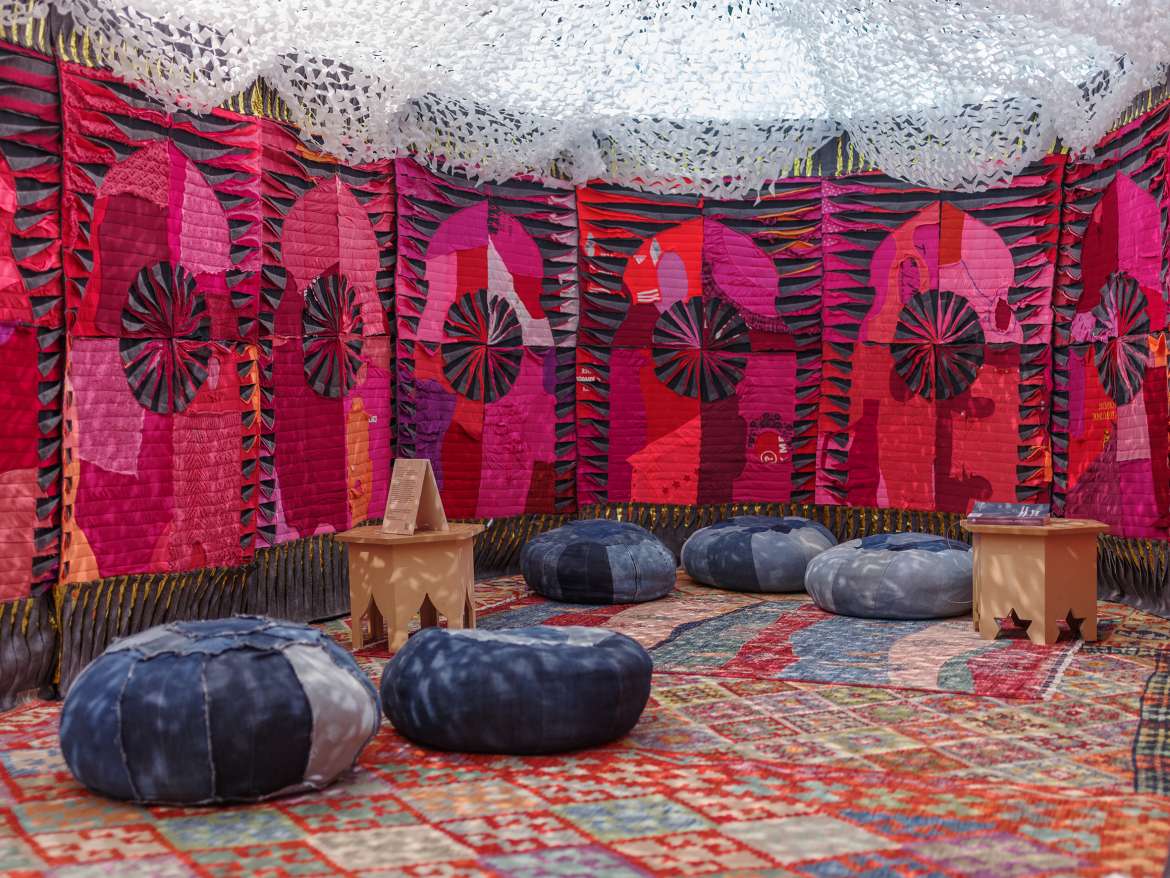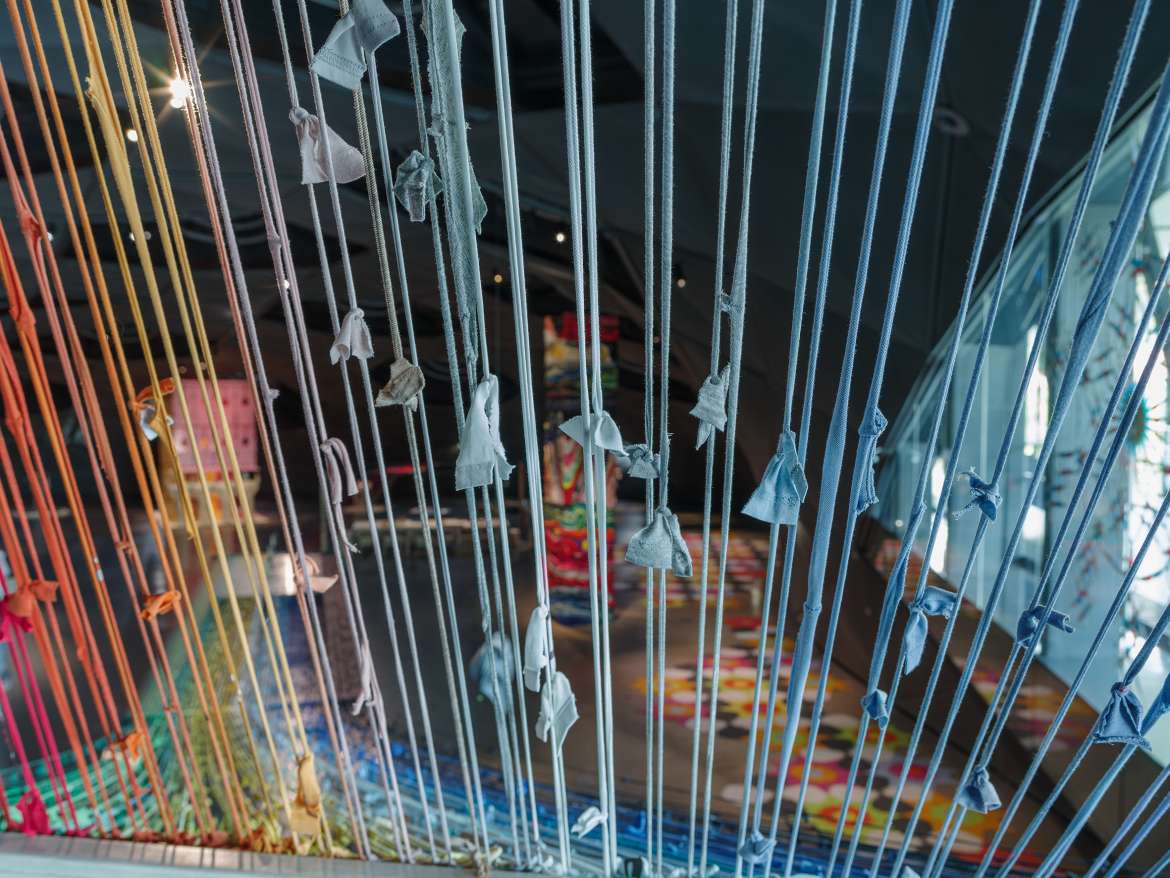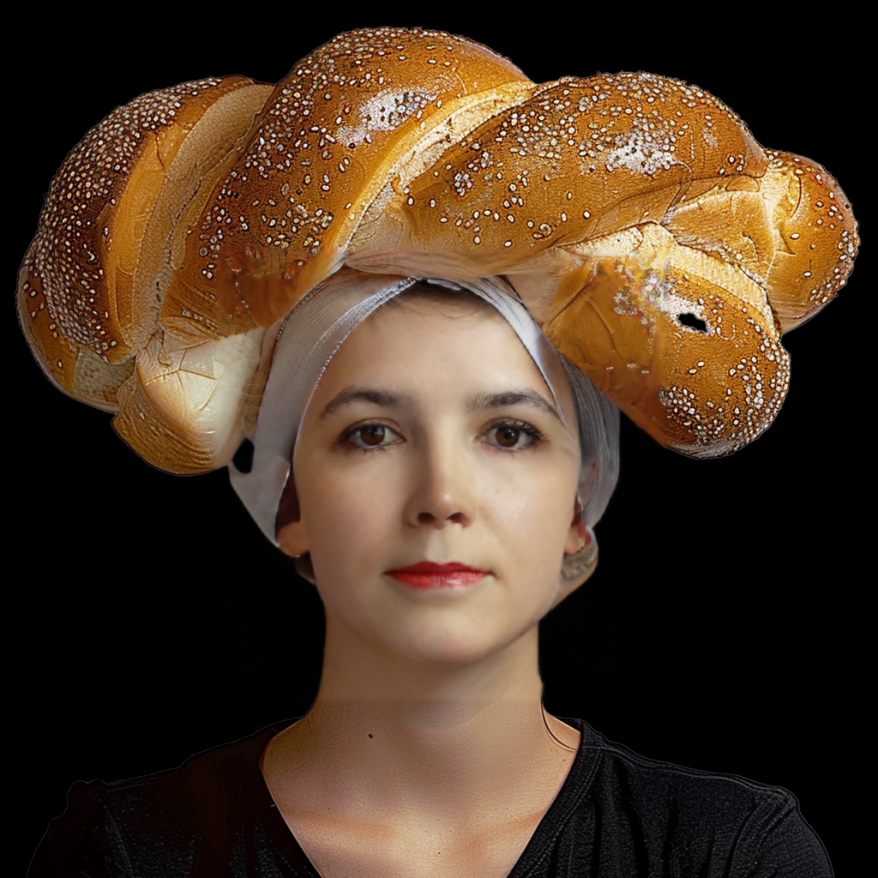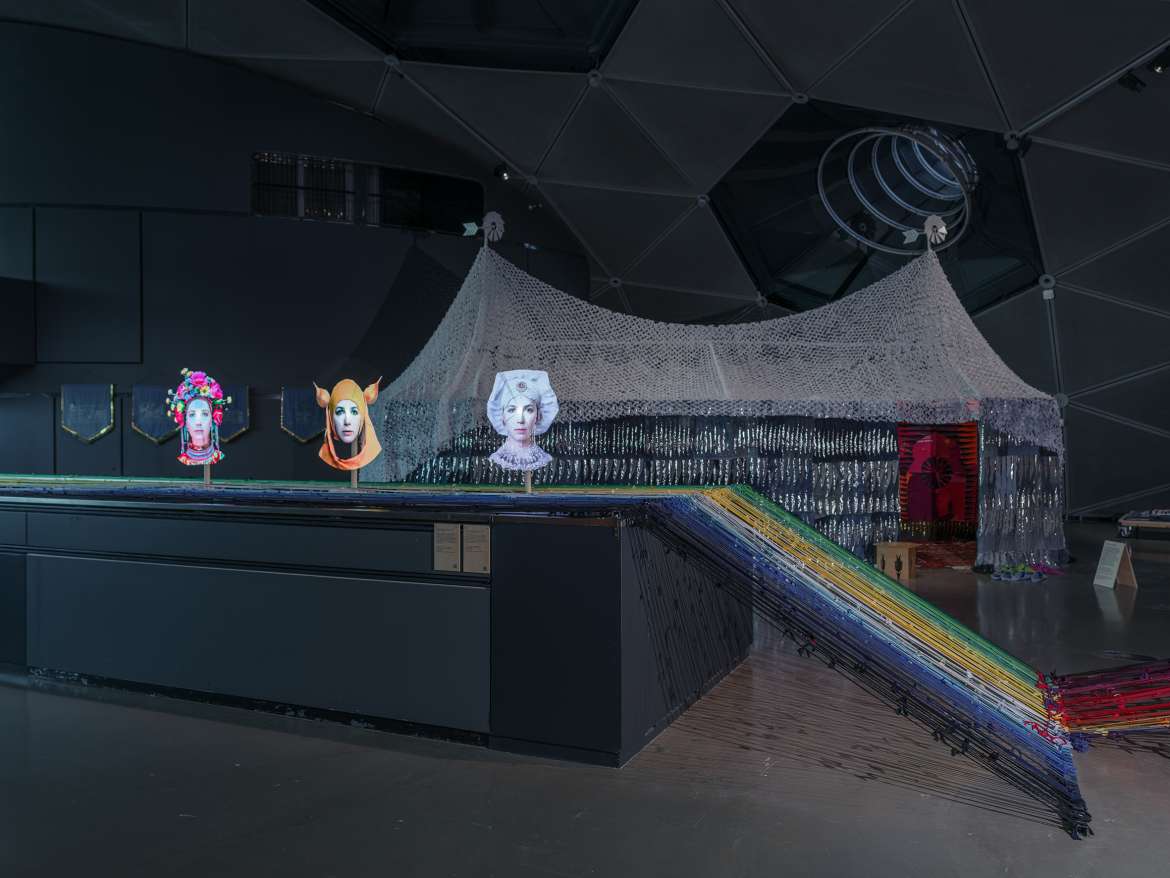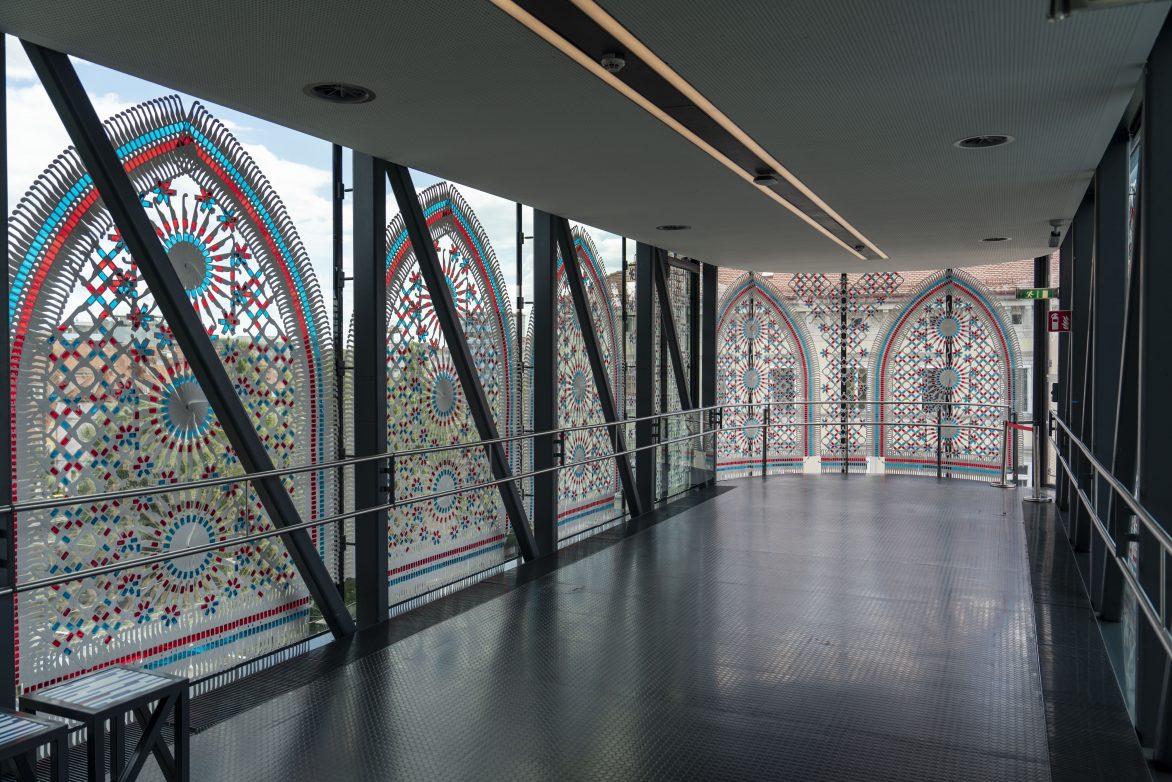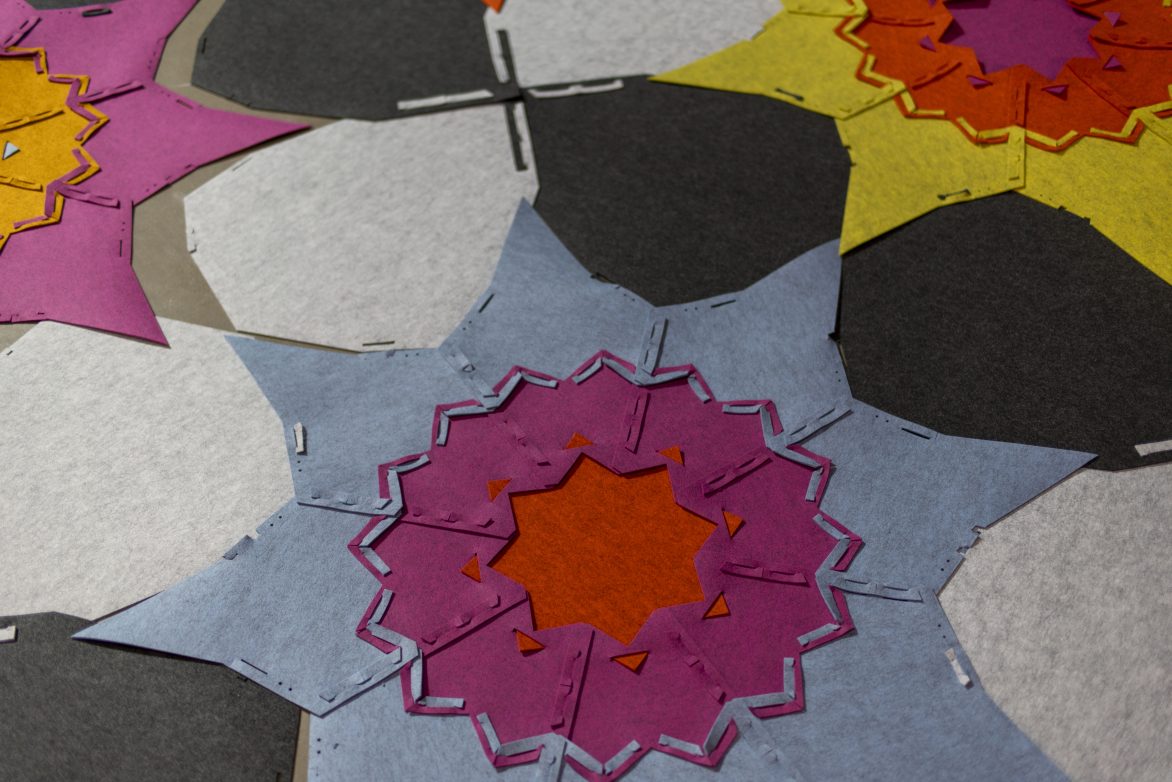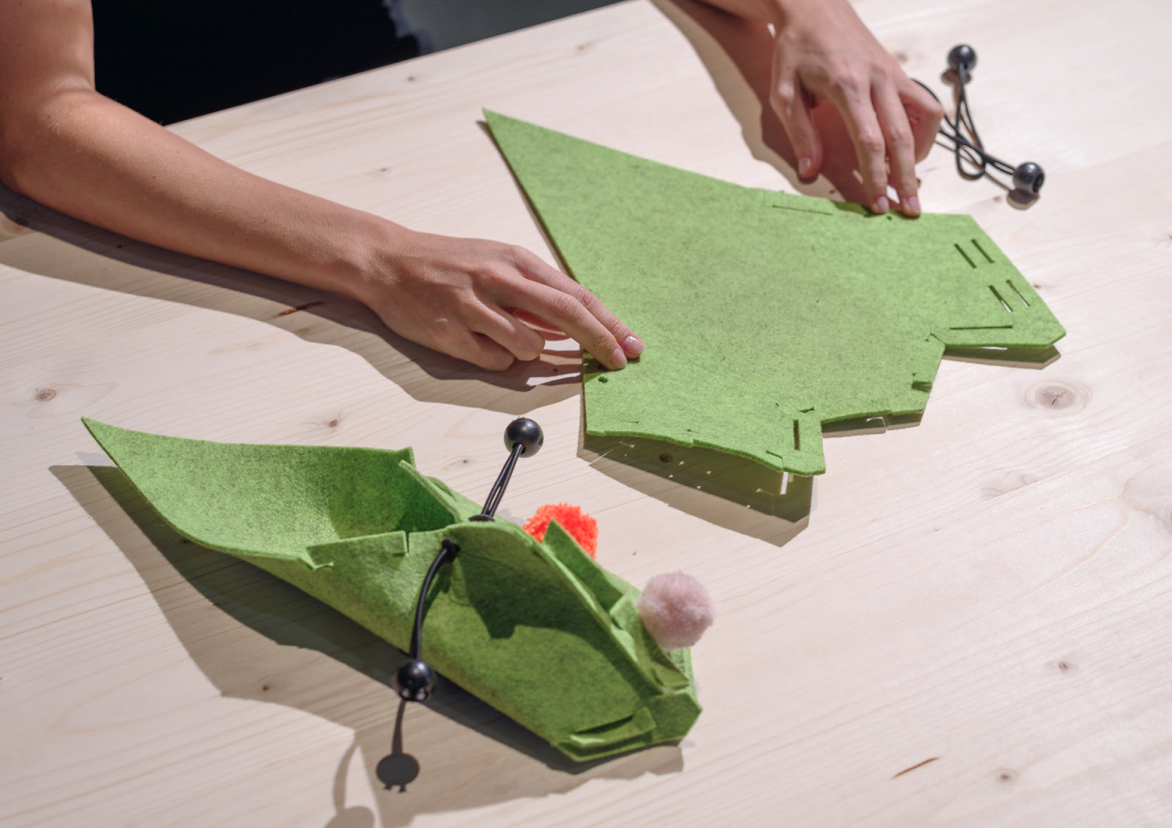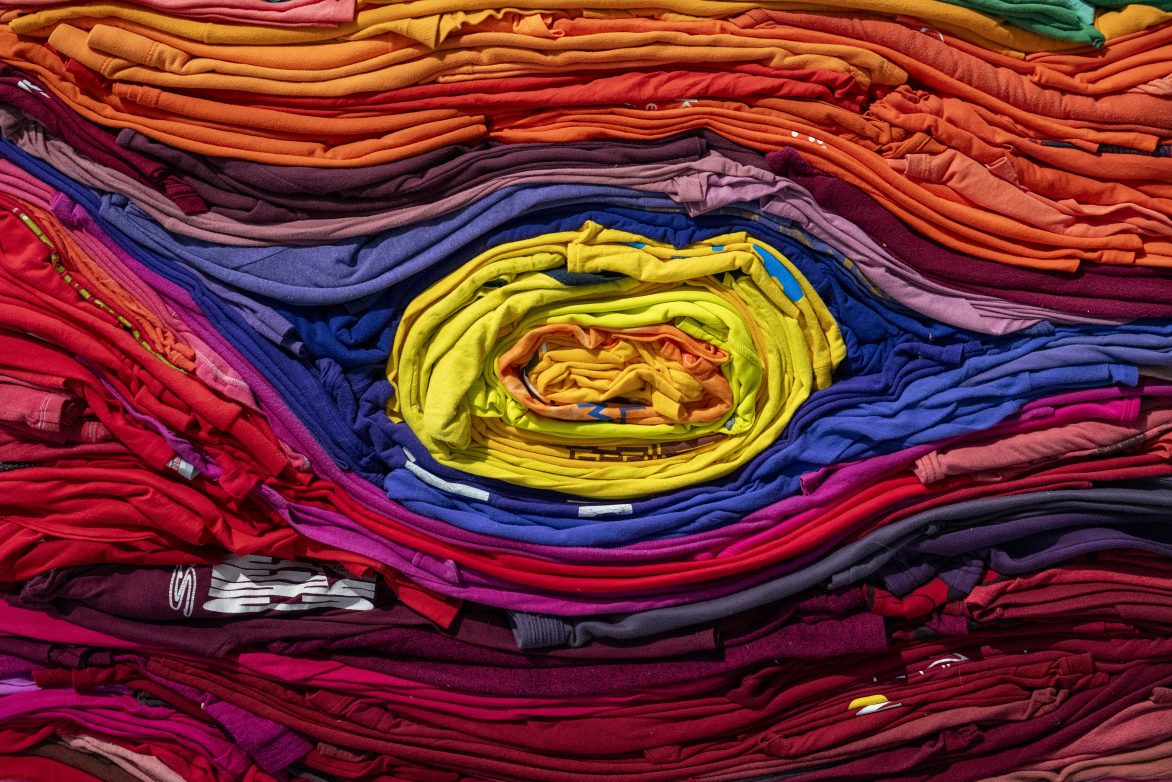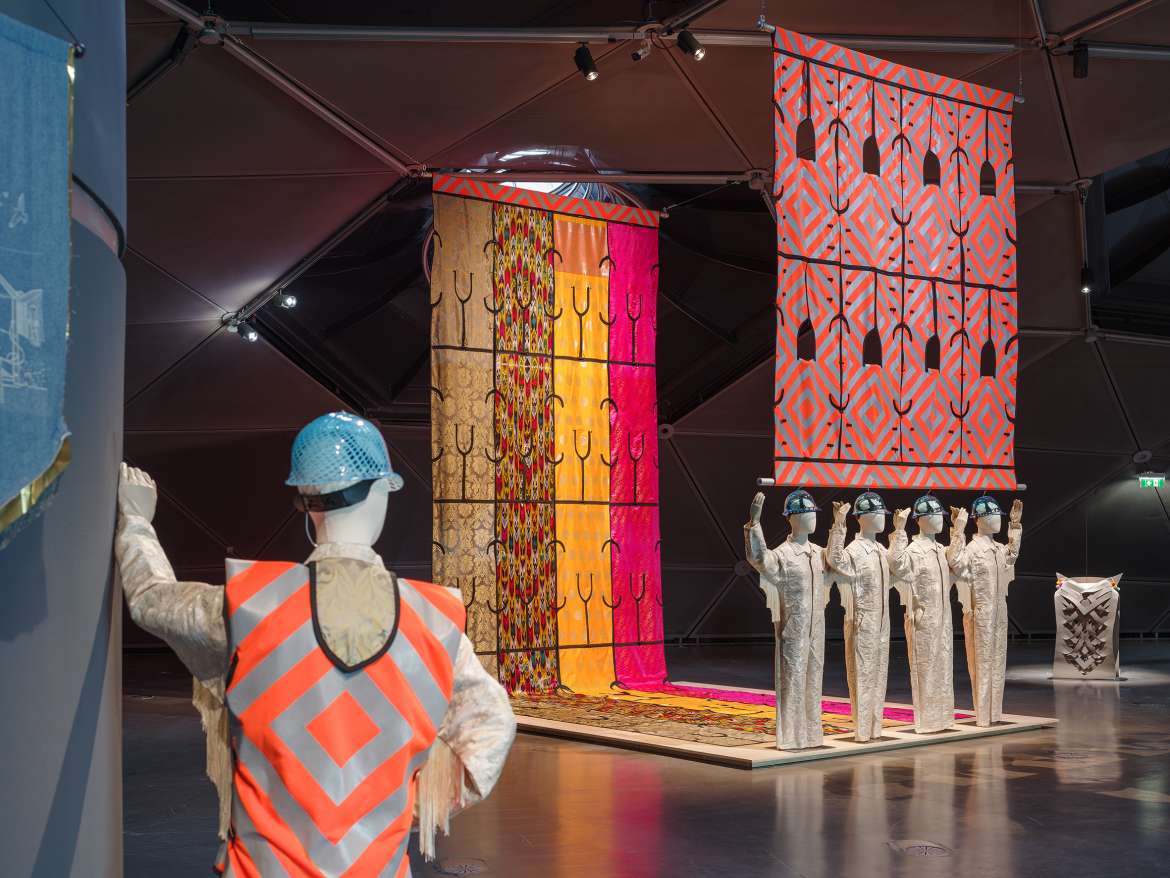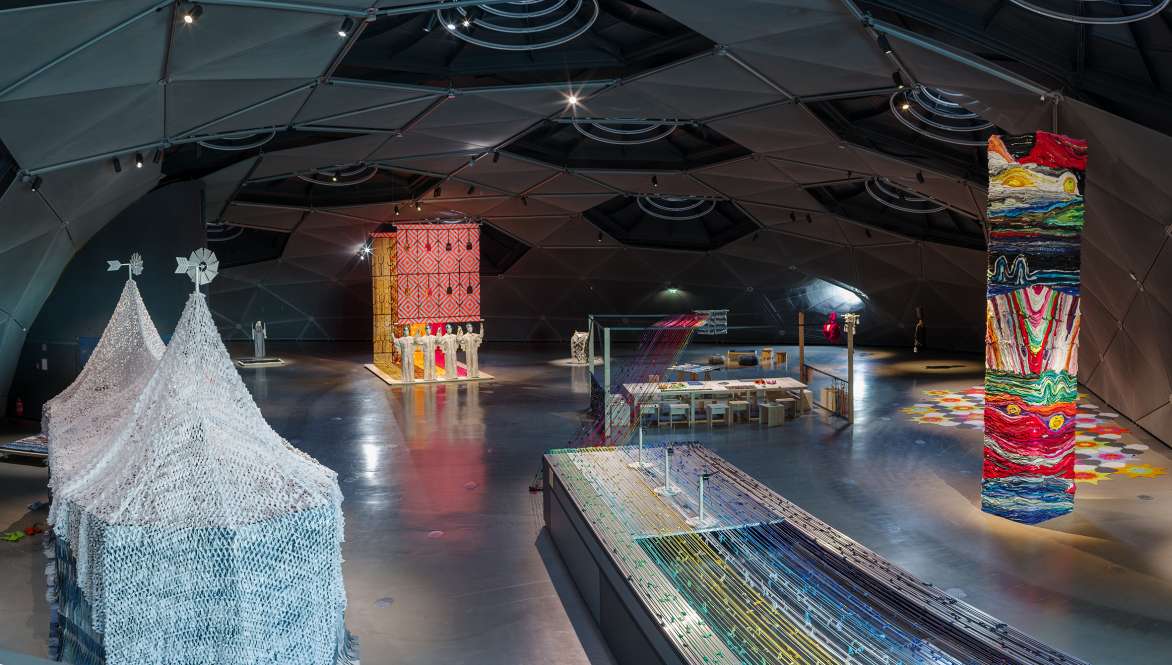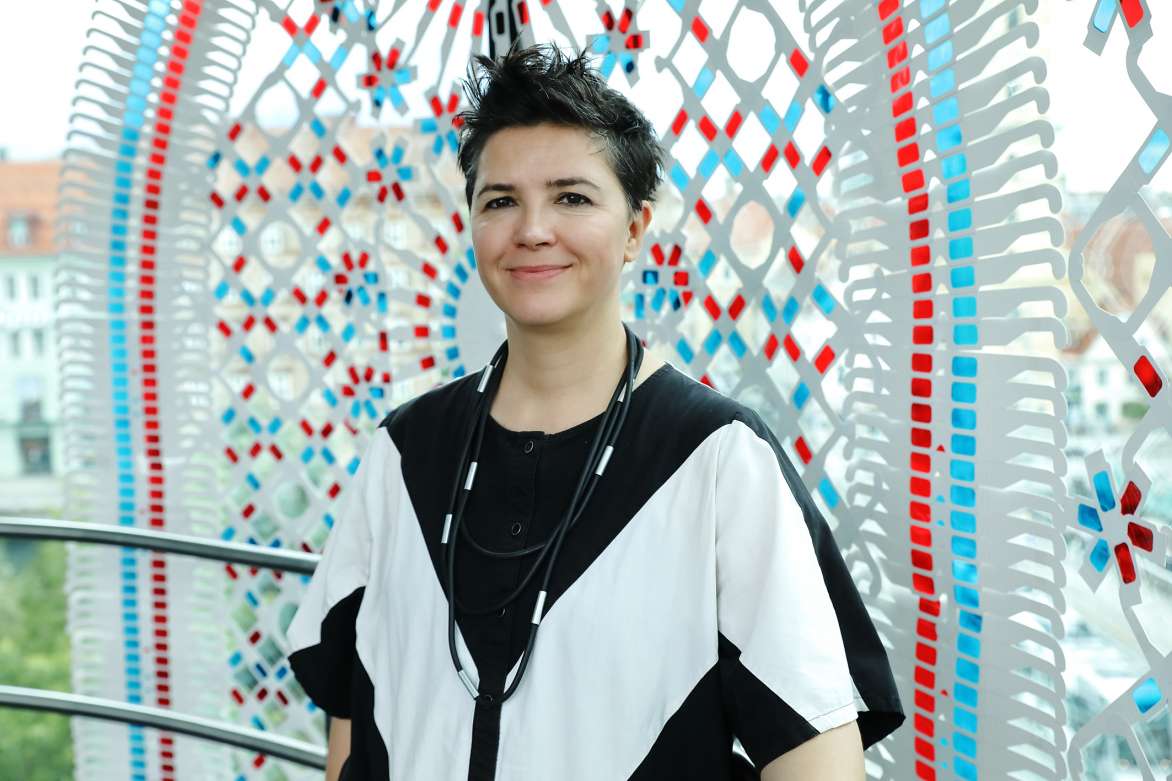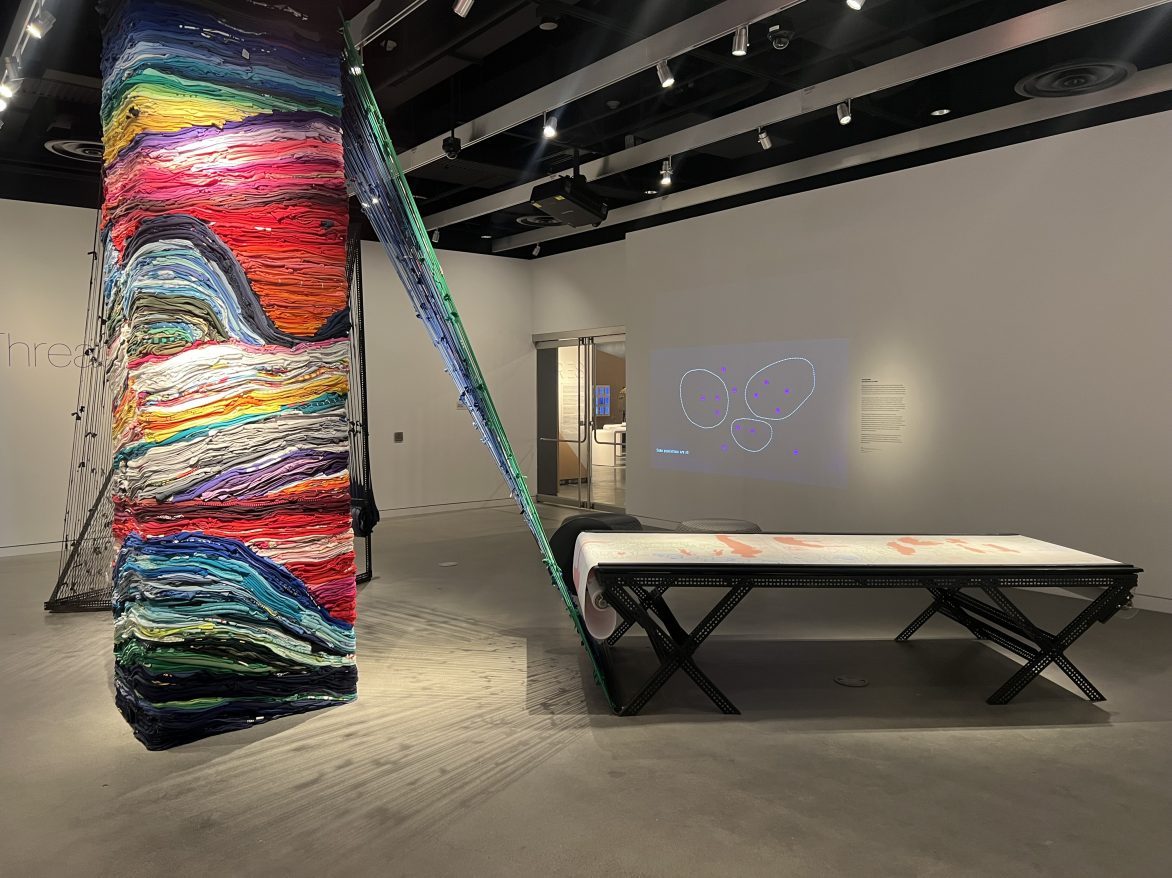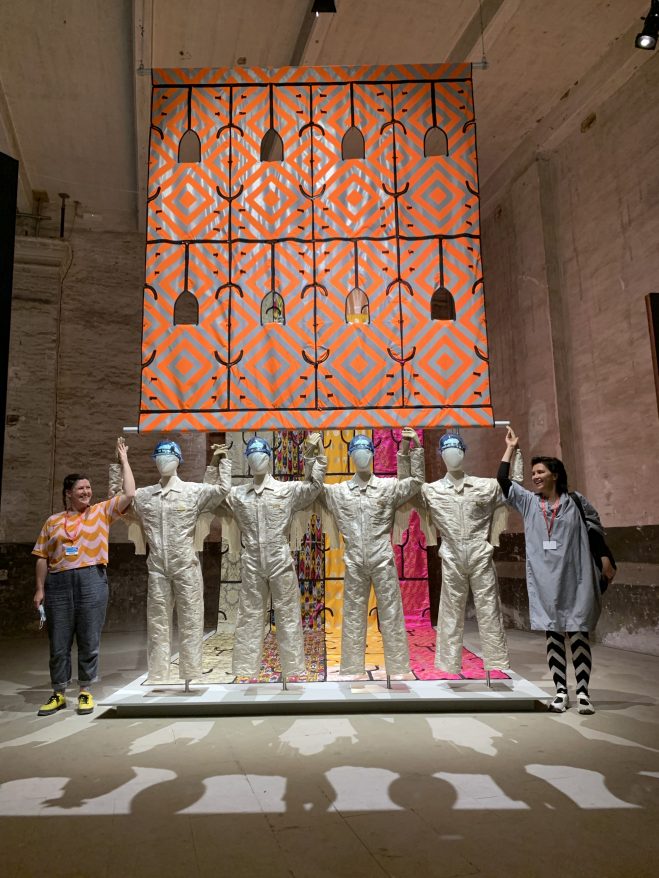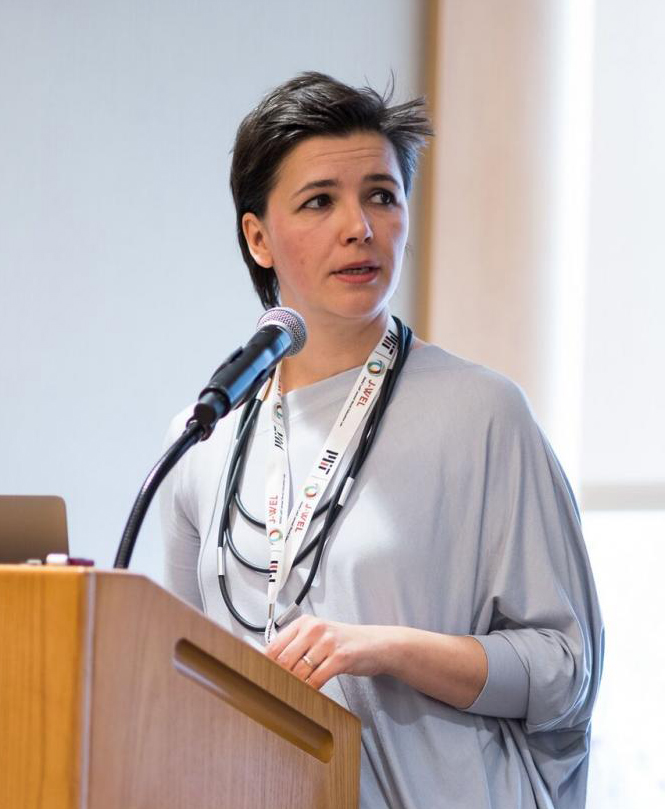ACT Professor and Director Azra Akšamija’s mid-career retrospective exhibition Sanctuary is now on view at Kunsthaus Graz in Austria through October 6, 2024. This is Akšamija’s first major solo exhibition in her second home country. It explores the multifaceted concept of “sanctuary” through immersive installations, focused on textile art and wearable technologies.
The exhibition explores the concept of the ‘safe harbor’, turning the spotlight on social, ethical and ecological sustainability. Posing questions about our consumer economy, it provides us with tools with which we can take action ourselves through unbiased repurposing and productive acquisition. Put together for the Kuppelraum (Domed Room), the solo exhibition is also dedicated to the museum itself. It is seen as a protected space in a constant state of flux and functions as a place of negotiation set against a backdrop of climate and migration crises.
‘My art questions how disaffection can become empowerment.’
Upon entering Space01, visitors are greeted by a world of vibrant colors and rich textures. However, this initial visual appeal gradually gives way to a deeper exploration of complex global issues. Akšamija’s work engages with fundamental questions of our time: What truly matters to people? What are their rights and responsibilities? How does “belonging” manifest itself in a world marked by cultural exchange, inequality, and migration?
Highlighting the interdependence of individuals and their cultural imprints, the exhibition creates “sanctuaries” that shed light on the conditions of living and coexistence in our global community. The exhibition showcases several new works that navigate the tensions between economic efficiency, social cohesion, and environmental protection, confronting contemporary challenges.
Wearable architecture, recycled felt, dimensions variable.
The Bishty (2024) wearables serve as a portable and adaptable architectural system, featuring modular designs that can be reconfigured for various environmental conditions, embodying resilience in the face of climate change.
5-channel video installation, 3 min 30 sec, dimensions variable.
Hallucinating Traditions (2024), a 5-channel digital animation, utilizes cutting-edge AI algorithms to generate and manipulate cultural imagery, prompting viewers to consider how emerging technologies might reshape our understanding of identity and tradition.
Installation, anaglyph cardboard glasses, dimensions variable.
Spectacles of the Sacred (2024) transforms anaglyph 3D glasses into intricate, miniature stained glass windows, designed to reflect diverse spiritual iconography, inviting contemplation on the relationships between faith, consumerism, and artistic expression.
Felt, dimensions variable.
The multifunctional carpet installation Flocking (2024) dominates the exhibition space. This interactive piece transforms the gallery into a cultural sanctuary, encouraging visitors to remove their shoes, wear the carpet components as slippers, and experience the space from new perspectives, whether for moments of quiet reflection, communal gathering, or appreciation of art and craftsmanship.
In addition to these new pieces, Sanctuary also recontextualizes earlier projects by Aksamija. Coring, a textile art project that was originally created for the inaugural exhibition of the new MIT Museum in 2022, critiques the global consumerist economy through stacks of discarded T-shirts that resemble core samples. This piece highlights the significant role of the textile industry as one of the most lucrative and polluting industries today. Also included are notable earlier works such as Silk Road Works (2021) and its delicate glass helmets, commissioned for the 17th Venice Architecture Biennale, which uses wearable architecture to tackle issues of migration, labor, and transcultural exchange along the contemporary Silk Roads.
Despite the gravity of the subject matter, Akšamija strikes an effective balance between aesthetic pleasure and ethical inquiry. Her work provides a framework for investigation, analysis, and intervention in an increasingly crisis-ridden socio-political reality.
Sanctuary serves as a powerful call for global unity, intertwining social, cultural, and environmental concerns. The exhibition celebrates diversity and mutual respect and invites visitors to engage with the artworks through innovative reuse and imaginative interpretation of textiles. In doing so, it encourages active participation in shaping a more inclusive and empathetic global community.








